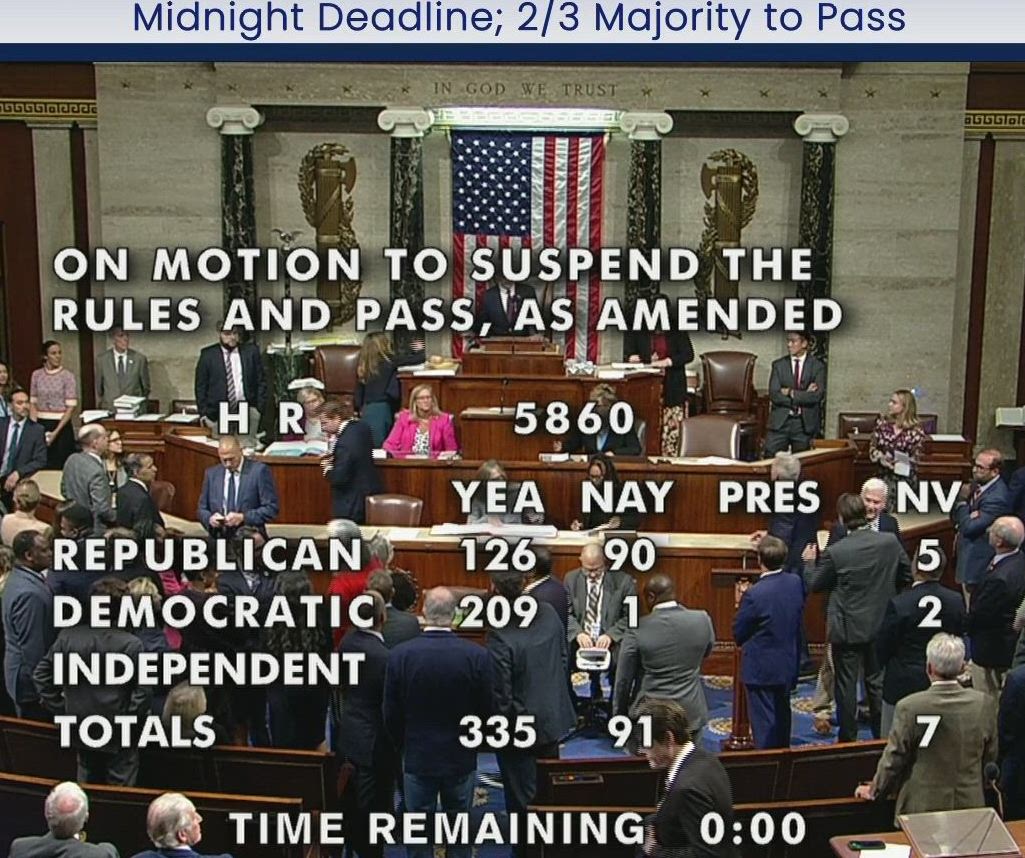The House on Saturday voted in favor of legislation House Speaker Kevin McCarthy (R-CA) called a “clean funding stopgap on the floor to keep government open for 45 days,” thus averting/failing to avert a government shutdown at midnight.
The vote was 335-91, with 209 Democrats and 126 Republicans voting yes. Only one Democrat voted against the legislation, while 90 Republicans voted against their own party’s measure.
The vote was taken under a process called “suspension,” which requires two-thirds majority for a vote to pass in the House—or at least 290 votes.
The Democrats’ support came despite the fact that, shortly after McCarthy announced the bill Saturday morning, House Minority Leader Hakeem Jeffries (D-NY) demanded that Democrats be allotted time to read the 71-page proposal. House Minority Whip Katherine Clark (D-MA) then called for a 90-minute adjournment to do just that.
McCarthy in January had agreed to a rule requested by far-right House Republicans that requires lawmakers receive the text of bills 72 hours ahead of any vote.
While the adjournment motion was defeated, White House officials Saturday reportedly consulted with House Democrats about the stopgap measure.
The legislation, which can be read here, includes status quo spending levels that the government has been working under for the past year, with only disaster relief and FAA reauthorization funding additionally attached.
Funding for politically charged issues like Ukraine aid and U.S.-Mexico border security were not attached to the bill.
“The House is going to act so that government will not shut down,” McCarthy told reporters Saturday morning ahead of the vote.
However, by Saturday afternoon Democratic House appropriators were circling a memo that took issue with several details in the measure—including the lack of funding for Ukraine.
And when McCarthy was asked Saturday morning whether he was worried that a far-right House member might call for a motion to vacate—essentially, calling for a “no confidence” vote against the Speaker to have him ousted—should he try to compromise with Democrats, McCarthy responded, “You know, if somebody wants to remove because I want to be the adult in the room, go ahead and try.”
Earlier in the morning, NBC News’ Julie Tsirkin had asked conservative Rep. Matt Gaetz (R-FL), “If McCarthy put a CR on the floor are you going to bring up a motion to oust him?”
Gaetz responded, “Well, that will be something I will chat with my colleagues about.”
The Senate was also set to hold a procedural vote aimed at its own stopgap legislation Saturday afternoon—two days after it had already passed one hurdle along bipartisan lines.
However, Senate Minority Leader Mitch McConnell (R-KY) said just as the House was voting that because Republicans in the upper chamber were waiting to see what the House would do, he was “fairly confident that most of my members—our members—are going to vote against cloture…Not necessarily because they are opposed to the underlying bill. But to see what the House can do on a bipartisan basis, and then bring it over to us.”
He added, “Under these circumstances, I’m recommending a ‘no’ vote, even though I very much want to avoid a government shutdown.”
Instead, the Senate scheduled a vote on the House bill by 6:30pm ET.
A government shutdown would stymie services in such areas as food safety, air travel, national parks, and the military where roughly 2 million active-duty military troops and reservists as well as two million civilian employees could be furloughed.
The last government shutdown occurred in December 2018-January 2019 and stretched on for five weeks in a dispute between then-President Trump and Democratic Congressional leadership over funding his border wall.
According to the non-partisan Congressional Budget Office, that shutdown—the nation’s longest ever—lowered the nation’s projected level of real GDP in the first quarter of 2019 by $8 billion, of which the CBO estimated only $5 billion was recovered.


